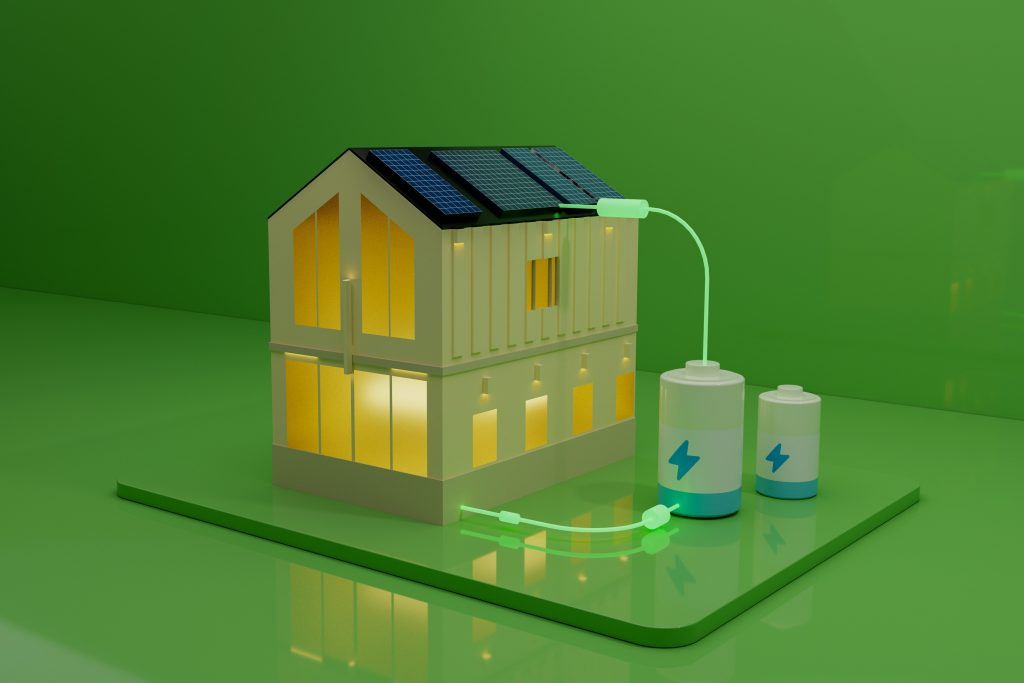Creating an energy-saving plan for your home is an excellent way to reduce your energy bills, decrease your carbon footprint, and contribute to a more sustainable environment.
Creating an Energy-Saving Plan For Your House
While it might seem daunting at first, with a little guidance and some practical steps, you can develop a comprehensive plan that works for you and your family. Here’s how to get started.
1. Look at Your Current Energy Use
The first step in creating an energy-saving plan is to understand how and where you use energy in your home. This involves conducting a simple energy audit.
How to Do It:
- Look at your energy bills over the past year to identify patterns and peak usage times.
- Common energy-intensive appliances include heating systems, air conditioning units, water heaters, and large household appliances like refrigerators and washing machines.
- There are many online calculators and tools available that can help you estimate your energy use and pinpoint areas for improvement.
2. Set Energy-Saving Goals
Once you have a clear picture of your current energy consumption, the next step is to set realistic and achievable energy-saving goals.
How to Do It:
- Decide on a specific percentage reduction in your energy use or set a target for reducing your energy bills by a certain amount each month.
- Establish a timeline for achieving these goals, such as reducing energy use by 10% over six months.
- Focus on the areas that will provide the most effective savings first, such as heating and cooling, which typically account for a large portion of home energy use.
3. Use Renewable Energy Sources
Incorporating renewable energy sources into your home can further reduce your energy consumption and environmental impact.
How to Do It:
- Consider potentially installing solar panels to generate your own electricity. Many governments offer incentives and rebates to offset the initial cost.
- These can be used to heat your water using energy from the sun.
- If feasible, small wind turbines can also be an effective way to generate renewable energy for your home.
4. Upgrade Your Home With More Energy-Saving Items
Replacing old, inefficient appliances with energy-efficient models can make a considerable difference in your overall energy consumption.
How to Do It:
- When purchasing new appliances, look for the Energy Star label or other energy efficiency certifications.
- While energy-efficient appliances might have a higher upfront cost, the savings on your energy bills will often outweigh this over time.
- Start with the appliances that consume the most energy, such as refrigerators, washing machines, and ovens.
5. Improve Your Home Insulation
Proper insulation is crucial for maintaining a consistent temperature in your home, which reduces the need for heating and cooling.
How to Do It:
- Inspect your home for drafts around windows, doors, and other openings. Use weather stripping or caulk to seal any gaps.
- Make sure that your attic and walls are properly insulated to prevent heat loss in the winter and heat gain in the summer.
- Consider installing double-glazed windows to improve insulation and reduce energy loss.
6. Implement Smart Thermostat Controls
Smart thermostats can help you manage your home’s heating and cooling more efficiently by allowing you to set schedules and control the temperature remotely.
How to Do It:
- Program your thermostat to lower the temperature when you are asleep or away from home and to warm up shortly before you return.
- Take advantage of features like geofencing, which adjusts the temperature based on your location, and learning algorithms that adapt to your schedule.
- Regularly review your energy usage data provided by the smart thermostat and make adjustments as needed.
7. Get Yourself Into Energy-Saving Habits
Small changes in your daily habits can lead to massive energy savings over time.
How to Do It:
- Make it a habit to turn off lights when you leave a room.
- Unplug electronics and chargers when they are not in use, as they can still consume energy in standby mode.
- Take advantage of natural light during the day to reduce the need for artificial lighting.
8. You Need to Review Your Progress
Regularly monitoring your energy use and reviewing your progress is essential to making sure that your energy-saving plan is effective.
How to Do It:
- Keep a record of your energy bills to see if there are any noticeable reductions.
- Be prepared to adjust your plan based on what is or isn’t working.
- Recognise and celebrate your achievements to stay motivated.
In Closing
Creating an energy-saving plan for your home is a practical and rewarding process. By assessing your current energy use, setting clear goals, upgrading to energy-efficient appliances, improving insulation, implementing smart controls, adopting energy-saving habits, utilising renewable energy sources, and monitoring your progress, you can really reduce your energy consumption.
Not only will this save you money, but it will also contribute to a more sustainable and environmentally friendly future. Start today, and enjoy the benefits of a more energy-efficient home.


